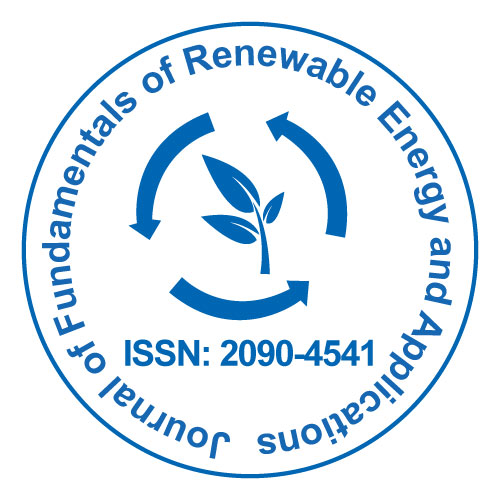
Journal of Fundamentals of Renewable Energy and Applications
Open Access
ISSN: 2090-4541

ISSN: 2090-4541
Parvez Kaladiya
Pandit Deendayal Energy University, India
Scientific Tracks Abstracts: J Fundam Renewable Energy Appl
Utilising chemically stable nanostructured photo-cathode/anode materials, there has been a tremendous amount of research and development in this field over the last few decades. It is exceedingly difficult to optimise individual components of such a system, resulting in a very low proven solar-to-fuel efficiency (SFE) of less than 1%. This is because charge separation and photo-catalytic processes are tightly connected. The potential to greatly augment and distribute the proportion of promising but erratic renewable energy can be realised by storing and distributing green hydrogen produced by solar energy. In this scenario, Resilient materials capable of solar-driven electrochemical water splitting for hydrogen synthesis present an intriguing approach applicable to all energy sectors. The traditional and most widely used method of producing hydrogen is electro-chemical water splitting, which uses platinum-based materials for the hydrogen evolution process (HER). Despite this, the poor cyclic stability of these platinum-based noble metal catalysts restricts their commercial use for cost-effective hydrogen. production. That is why the creation of effective non-noble metal-based electrocatalysts is urgently required to produce hydrogen energy that is competitively priced. Many non-noble metal-based heterogeneous electrocatalysts have been created and researched, including carbides, sulphides, selenides, oxides, and phosphides . but never utilised polymer-based nano-composite, therefore,55 polymer-based nano-composite is utilised here. Copper Titanium Poly-Indole (CuO/TiO2/PIn) nano-composite is completely novel and has never been created by an intellectual before. Carbonaceous materials are excellent candidates to support catalysts due to their distinct physicochemical characteristics. In this research paper, Using electrolysis to produce solar hydrogen, copper titanium Poly-indole (CuO/TiO2/PIn) nanomaterial catalysts have been created, coated on nickel (Ni)-based materials, and then employed. The conversion efficiency from solar to hydrogen is determined to be 3.43% at 320 W/m2 irradiances and 26 °C operating temperature.
Parvez Kaladiya is a highly qualified individual with an MSc in Physics from Pandit Deendayal Energy University, showcasing expertise in the field's theoretical and experimental aspects. Specialized in Advanced Fabrication and practical techniques, having strong analytical skills, research experience, and the ability to communicate complex ideas effectively. This educational background positions me as a valuable asset in scientific and research-oriented roles within the field of physics. His fascination with hydrogen began early in my academic journey. Intrigued by its immense potential as a clean and sustainable energy source, He embarked on a research quest to explore its generation and applications.